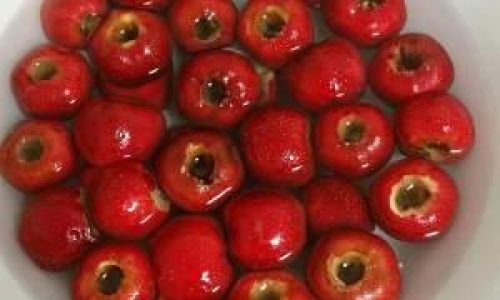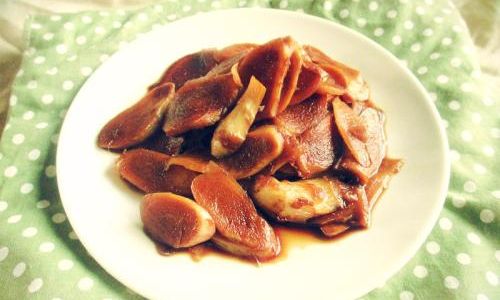Introduction
The crisp autumn air often brings with it a bounty of fruits, among which the hawthorn (Crataegus species) stands out with its vibrant red hue and tangy-sweet flavor. Known for their nutritional benefits and culinary versatility, fresh hawthorns are a delight to many. However, their shelf life can be quite limited, prompting the question: can fresh hawthorns be stored in the refrigerator? This article delves into the intricacies of storing fresh hawthorns, exploring the suitability of refrigeration, alternative storage methods, and the impact of storage conditions on the fruit’s quality.
Understanding Hawthorn Fruit

Before discussing storage methods, it’s crucial to understand the basic characteristics of hawthorn fruit. Hawthorns are small, berry-like fruits that grow on deciduous trees belonging to the Rosaceae family. They are native to temperate regions of the Northern Hemisphere and are valued for their medicinal properties, vitamin C content, and use in various culinary preparations.
Hawthorns vary in size, color, and taste, depending on the species and ripeness. When ripe, they typically have a deep red or orange hue, with a firm texture and a balance of tartness and sweetness. Their skin can be smooth or slightly bumpy, and they contain several small seeds within.
The Importance of Proper Storage
Proper storage of fresh hawthorns is essential to preserve their quality, flavor, and nutritional value. Improper storage can lead to rapid deterioration, characterized by softening, mold growth, and loss of flavor. Given their seasonal availability and perishable nature, finding effective storage solutions is paramount for those who wish to enjoy hawthorns throughout the year or use them in long-term preparations like jams, jellies, or dried fruits.
Refrigeration: A Viable Option?
Refrigeration is a common method for prolonging the shelf life of perishable foods. By lowering the temperature, refrigeration slows down the growth of microorganisms and the biochemical processes that lead to spoilage. However, the suitability of refrigeration for hawthorns depends on several factors, including the fruit’s maturity, packaging, and storage duration.
Maturity and Ripeness
The ripeness of hawthorns plays a crucial role in their storage potential. Fully ripe hawthorns with a deep, uniform color and firm texture are best suited for refrigeration. Underripe or overripe fruits may not respond well to cold storage, as they may develop off-flavors or soften excessively.

Packaging Considerations
Proper packaging is essential to maintain the quality of refrigerated hawthorns. Airtight containers or plastic bags can help retain moisture and prevent the fruit from drying out. However, it’s important to avoid sealing the container too tightly, as this can trap ethylene gas, which can accelerate ripening and spoilage.
Perforated plastic bags or containers with ventilation holes are ideal. These allow for some gas exchange while keeping the fruit relatively isolated from external contaminants. Additionally, lining the container with a paper towel can absorb any excess moisture, further extending the fruit’s freshness.
Storage Duration
While refrigeration can significantly extend the shelf life of hawthorns, it’s not a permanent solution. Generally, fresh hawthorns can be stored in the refrigerator for up to two weeks, depending on their initial quality and storage conditions. After this period, the fruit may start to show signs of deterioration, such as softening, discoloration, or mold growth.
Temperature Control
The ideal refrigerator temperature for storing hawthorns is between 32°F to 40°F (0°C to 4.4°C). This range balances the need to slow down spoilage processes with the risk of freezing, which can damage the fruit’s texture and flavor.
Alternative Storage Methods

While refrigeration is a popular choice, it’s not the only option for storing fresh hawthorns. Depending on personal preferences and intended use, several alternative methods can be employed:
Freezing
For long-term storage, freezing is a viable alternative to refrigeration. Freezing preserves the fruit’s nutritional value and flavor while allowing for extended use over several months. To freeze hawthorns, wash and dry them thoroughly, then place them in a single layer on a baking sheet. Once frozen solid, transfer them to airtight containers or freezer bags.
Drying
Dried hawthorns can be used in teas, baking, or as a snack. To dry the fruit, wash and pit it, then spread it out in a single layer on a baking sheet. Place the sheet in a sunlit area or a food dehydrator set to a low temperature. Dried hawthorns should be stored in airtight containers in a cool, dark place.
Canning and Preserving
Hawthorns can be preserved through canning or making jams and jellies. These methods involve cooking the fruit with sugar and/or acid to create a shelf-stable product. Canned hawthorns or preserves can be stored in a cool, dark pantry for several months to a year.
Impact of Storage Conditions on Hawthorn Quality

The quality of stored hawthorns is influenced by various factors, including temperature, humidity, light exposure, and packaging. Understanding these factors is crucial for optimizing storage conditions and maximizing the fruit’s shelf life.
Temperature
As mentioned earlier, the ideal storage temperature for hawthorns is between 32°F to 40°F (0°C to 4.4°C). Temperatures above this range can accelerate spoilage, while temperatures below the freezing point can damage the fruit’s cells, leading to texture changes and flavor loss.
Humidity
Maintaining an appropriate humidity level is essential to prevent hawthorns from drying out or becoming moldy. In refrigerated storage, the humidity should be kept around 85% to 90%. This can be achieved by using humidity-controlled containers or wrapping the fruit in damp paper towels.
Light Exposure
Exposure to direct sunlight can degrade the pigments and vitamins in hawthorns, leading to discoloration and nutrient loss. Therefore, it’s important to store the fruit in opaque containers or wrap them in dark materials to protect them from light.
Packaging and Gas Exchange

As mentioned earlier, proper packaging is crucial for maintaining the quality of stored hawthorns. Airtight containers can help retain moisture, but they must allow for some gas exchange to prevent the buildup of ethylene gas. Perforated bags or containers with ventilation holes are ideal for this purpose.
Conclusion
In conclusion, fresh hawthorns can indeed be stored in the refrigerator, provided that the correct conditions are met. By selecting ripe, high-quality fruit, using appropriate packaging, and maintaining optimal temperature and humidity levels, you can significantly extend the shelf life of your hawthorns while preserving their flavor and nutritional value.
However, it’s important to note that refrigeration is not a panacea. For long-term storage or alternative uses, methods such as freezing, drying, and canning offer viable options. Each method has its own set of benefits and drawbacks, and the choice should be based on personal preferences, intended use, and available resources.
Ultimately, the key to successful hawthorn storage lies in understanding the fruit’s characteristics and responding to them with appropriate storage strategies. By doing so, you can enjoy the delights of fresh hawthorns well beyond their natural season.






0 comments